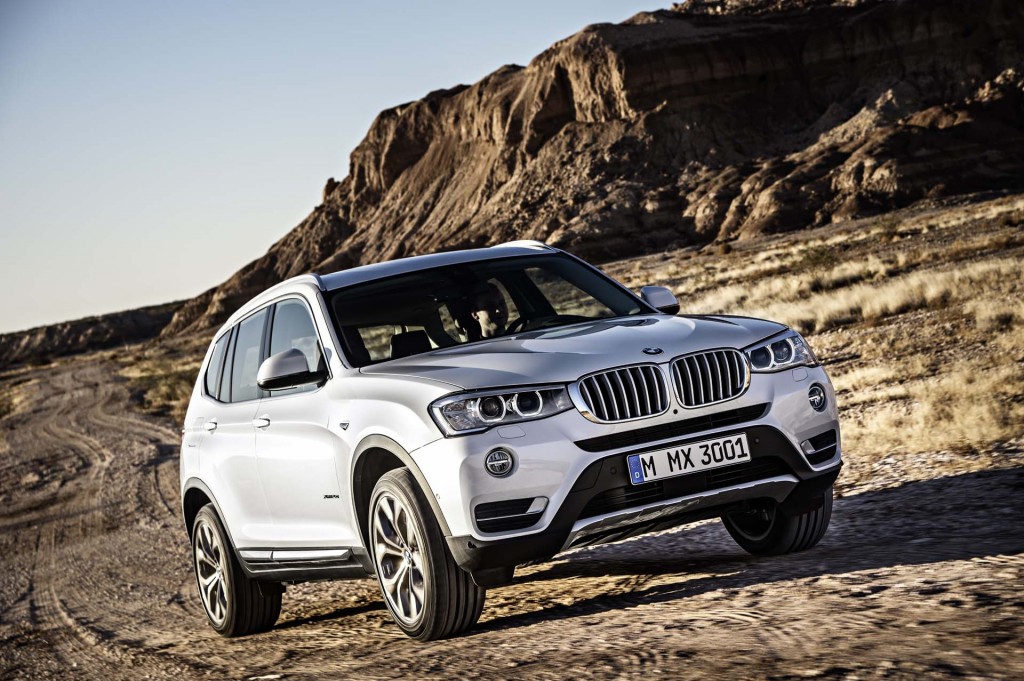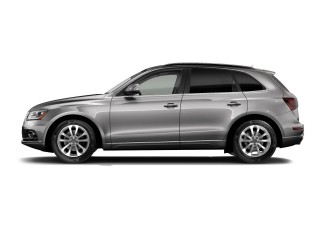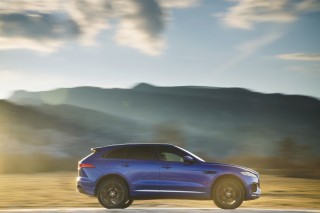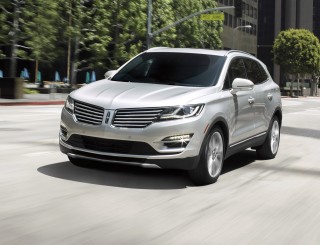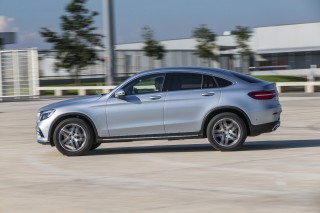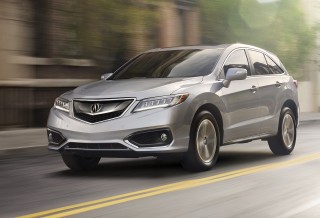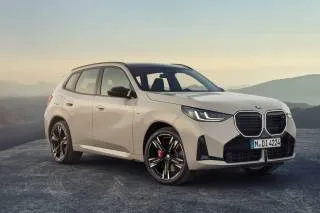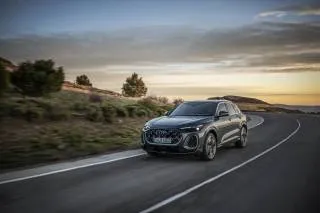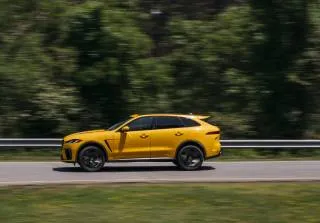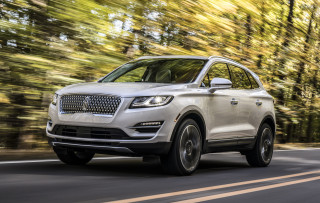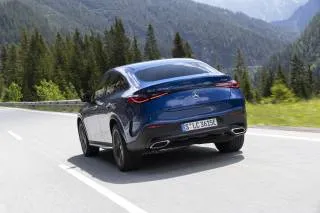Likes
- Good, sedan-style looks
- Very efficient interior space
- Great powertrain options
- Good results from major safety organizations
- Fun to drive
Dislikes
- Gets expensive in a hurry
- Start-stop should be smoother
- Rearview camera is buried in options
- Not exactly off-road material
Buying tip
features & specs
The 2017 BMW X3 continues its run as one of the best compact luxury SUVs on the market—even in the face of much newer competition.
The 2017 BMW X3 is the automaker's four-door compact luxury SUV. It competes in a hyper-competitive segment crowded by the Mercedes-Benz GLC-Class, Audi Q5, Lincoln MKC, Lexus NX, Acura RDX, just to name a few.
Although it's expected that the X3 will be completely overhauled sometime next year, the current model is just two years removed from a facelift that helped the SUV age more gracefully and keep it among the leaders in its segment.
It earns a rating of 6.8 out of 10, based on good performance and features, less so for missing safety features. (Read more about how we rate cars.)
BMW X3 styling and performance
The BMW X3 strikes the right chord for many luxury SUV shoppers. It's not surprising: the strong combination of style, practicality, and powertrain options combined with loads of available technology in a fun-to-drive package wouldn't turn away many buyers—the bottom line could make them blush a little, however.
The X3 keeps the same handsome proportions as when it first arrived in the U.S. Although the X3 isn't as bold as the X4, from which it shares running gear, that's not a bad thing. The X3 delivers on its visual promise of being a tall wagon for families who need more capability and comfort than a sedan.
Inside, the X3 is awash in handsome materials and thoughtful ergonomics. The X3 sports one of our favorite cockpits from BMW's lineup..
Under the hood, the X3 comes into its own. The base turbocharged inline-4 engine is impressive. Its 240 horsepower is enough to propel the car up to 60 mph in just over six seconds, and its mated to a smooth shifting 8-speed automatic. Rear-drive is available, but most X3s will be fitted with all-wheel drive, which BMW calls "xDrive."
Buyers can opt for a bigger, turbocharged inline-6 that produces 300 hp and borders on "performance" territory. The X3 xDrive35i speeds up to 60 mph in just over five seconds, and is paired exclusively to the same 8-speed and all-wheel drive. It's an enthusiastic ride, if not a little excessive. (We're still OK with that.)
Comfort, safety, and features
The X3 prioritizes versatility and its 27.6 cubic feet of cargo room is among the leaders in its class. Front seat passengers get the best seat in the house, rear seat passengers have a little less leg room than others in its class.
All told, the X3 is screwed together nicely: the tight-as-a-drum assembly and soft-touch materials are what we expect when we think of a luxury BMW.
The X3 has a good record for safety, albeit an incomplete one. Federal testers give the SUV five stars overall, and the independent IIHS has given it top "Good" scores in every crash test, except for the difficult small-overlap crash test, where it hasn't been rated at all.
The X3 is available with optional advanced safety features such as blind-spot monitors, adaptive cruise control, and frontal collision warning with automatic emergency braking, but unfortunately a rearview camera is optional as well.
As equipped, the X3 is on par with many others in its class, but like many BMW models, the options list can add up quickly. We suspect many buyers will opt for a cold weather package that adds front and rear heated seats, heated steering wheel, and headlight washers, which is a decent value at $950. We'd also suggest the $1,700 adjustable dampers that help soften the ride from its standard run-flat tires.
EPA ratings keep the 2017 BMW X3 competitive with others in its class; the most popular configuration has been rated at 21 mpg city, 28 highway, 24 combined. A lack of electrified powertrains keeps it from climbing higher on our "Green" scale, something we suspect will be remedied soon.
2017 BMW X3 Styling
The BMW X3 has grown into its skin very well; it looks less like an SUV and more like a tall sedan now.
The 2017 BMW X3 isn't as daring as its related X4, but we're not convinced that's a bad thing. The X3 has held up well since it was new in 2011, and its handsome proportions complement the tall wagon.
The X3 has turned left behind some of its features that drew it closer to the bigger X5. The X3 looks leaner, more pert, and more graceful than its bigger sibling. It's worth a 7 out of 10 for styling. (Read more about how we rate cars.)
Twin circular headlights up front (with optional LED lamps), a more pronounced version of BMW's kidney grille, and minor front tweaks brought the X3 more in line with BMW's sedans, rather than its SUVs.
While those changes only served to keep the X3 updated with some of the aesthetic details from the rest of the BMW lineup, the X3 still hits the spot, with graceful swooping belt-line crease, a nicely tapered nose that isn't too high and blunt, and chiseled lines next to the hood that actually serve to lower the belt line visually. LED-lit taillights are shaped like those on a 5-Series or 3-Series sedan.
Together it pretty much adds up to the opposite of the rugged (and faux-rugged) SUV look. And in all, the X3 is infused with more attention to detail and attention to surfacing than before, without a lot of excess styling pieces that aren't functional.
Two lines are available as options on the X3. The xLine adds tasteful touches of brightwork to the windows and grille, the M Sport package adds a more aggressive front fascia and high gloss black above the window line.
Inside, the X3 will be familiar to anyone who's driven a modern BMW. The dash arcs to skew controls and displays toward the driver, which reinforces its tie to the automaker's sedans. The dash has been fitted with more soft-touch materials, and everything from the middle of the doors on up is nicely grained.
This year, BMW deleted some of its more neutral shades of leather and faux-leather, which it calls SensaTec. Beige and "Sand beige" (We wonder, what's the difference?) are gone, but our favorite milk chocolate brown with orange contrast stitching remains. Only the boldest browns are rewarded, we say.
2017 BMW X3 Performance
The BMW X3 excels in powertrains: the base turbo-4 is good, and the turbo-6 is downright quick.
The 2017 BMW X3 delivers on its promise of a tall riding wagon and its "sports activity vehicle" moniker—so long as those activities are mostly places accessible by road.
It earns a 7 out of 10 for performance, thanks to its optional engine and very good ride and handling. (Read more about how we rate cars.)
The X3 is available with two different gasoline engines. A turbodiesel engine was available last year, but the automaker said increased testing by the federal government has forced BMW into holding back those cars until they've been given the green light.
The base model is a rear-drive turbocharged inline-4 that makes 240 horsepower and 260 pound-feet of torque. That engine is paired exclusively to an 8-speed automatic transmission and it's no slouch; the sDrive28i can rip off runs to 60 mph in 6.2 seconds. All-wheel drive doesn't slow it a bit: the xDrive28i manages the same run up to 60 mph from a standstill.
For anyone who hasn't visited a BMW showroom recently the presence of a turbo-4 instead of a straight-6 may be heresy, but trust us: The turbo-4 is plenty of power. Foot to the floor it moves without hesitation. With direct injection, Double-Vanos variable camshaft timing, Valvetronic variable valve timing, and twin-scroll turbocharging, the BMW turbo-4 spools up very quick, with peak torque reached at 1,250 rpm all the way up to 4,800 rpm.
For those who are unswayed by our above argument, BMW will indulge your preference—provided your pockets are deep enough.
With the xDrive35i, BMW packs in its turbocharged inline-6 that makes 300 hp and 300 lb-ft of torque. Runs up to 60 mph take just 5.3 seconds, and yes, it's fast for this kind of SUV. The inline-6 comes paired to the same 8-speed automatic, and it launches with every bit of the authority of a great 3-Series, without the typical squat and nosedive that accompany a taller vehicle like this.
All X3 versions except for that base sDrive28i come with BMW's xDrive all-wheel drive system, which splits power delivery 40/60 percent. It sends 60 percent of torque to the rear wheels in normal driving but can flex to send 100 percent to the rear; we've found it is especially good for maintaining traction and poise when the road surface is slippery.
The base steering system in the X3 builds up cornering feel even during lower-speed turns and lane changes but doesn't unwind with much feel or linearity. We tend to like the optional Variable Sports Steering a bit better; it's essentially just a good variable-ratio rack, providing a relaxed feel on center, at high speeds, but allowing you to more easily maneuver at lower speeds, around tight corners. And we think that you actually get more road feel.
Suspension and steering controls are user-configurable in the X3, but it's better executed than in some other BMW vehicles. The basic suspension is still classic BMW, with MacPherson struts and a multi-link rear. The electronic shocks grafted on can be adapted to the driver's tastes with a Driving Dynamics Control switch located near the gearshift lever. Normal, Sport and Sport+ modes let you adjust not only the dampers, but the throttle, transmission and steering feel according to the selected mode. It's a BMW—so it's not a shock that it feels best in Sport mode, where the electronics set up not just a tauter ride but swifter steering responses.
The X3 is capable of mild off-roading, but even that doesn't feel completely in its wheelhouse. On-road performance is at center for this model. As we've noted in repeated drives of various X3 variants, it's all a little disconcerting how agile and athletic the X3 can feel—because the seating height is so tall, yet it lacks the squat, nosedive, and excess motions that are typical in this vehicle class.
2017 BMW X3 Comfort & Quality
The BMW X3 is put together very well and features some of the most usable space in its class.
The 2017 BMW X3 is one of the most versatile crossovers in its class, with spacious cargo room and a fairly compact stance. It's a roomy alternative for buyers who need space for weekend trips and shopping runs, but can't bring themselves to consider a family wagon.
We give it a 8 for utility and comfort, with points in the plus column for front and rear seats and cargo space. (Read more about how we rate cars.)
By the numbers, the X3 measures 183.8 inches long with a 74.1-inch wheelbase and 110.6 inches between the front and rear tires. Its 66.1-inch height adds versatility and plenty of head room. Its tall stature results in a 27.6 cubic foot cargo area, among tops in its class, and is much larger than the 19.4 cubes offered by the Mercedes-Benz GLC-Class. (The Audi Q5 has 29.1 cubic feet of cargo room.)
Overall, we like the X3's interior packaging and the SUV makes good use of its available space. The firm, properly angled front seats are surrounded by good head room and plentiful leg room. Rear passengers make do with 36.5 inches of leg room, which is roughly 1 inch less than the Audi and Mercedes. There's seating for five, which is more than we can say about the mechanically related X4. Rear seats now all have a ski pass-through and 40/20/40 segments for better flexibility and seat back folding.
The X3's ride quality is fairly firm in all trims; BMW uses 18-inch run-flat tires on the X3 as standard with bigger 19-inch wheels available. Opting for the adjustable dampers helps quell some of those harsh vibrations through softer damping, but the X3 can still crash through harsher pavement.
Inside, the X3 is fairly quiet, although the coarse 4-cylinder is relatively audible at idle. Road and wind noise are effectively sealed out.
Even if this isn't the most lavish interior, the combination of soft-touch materials and tight-as-a-drum assembly add up to a muted ambiance that helps soak up harsh sounds both from inside and vehicle and from outside.
Throughout the cabin, BMW has paid close attention to the details. The cargo area itself is lovingly detailed, with rich carpet, some of the most refined seat back latches we've ever seen, and metal cargo rails with zero tolerance for poor fit.
2017 BMW X3 Safety
The 2017 BMW has impressive safety ratings from the feds, but the IIHS hasn't yet weighed in.
Ratings for the 2017 BMW X3 are incomplete, but the data so far is fairly good.
Federal testers have given the X3 a five-star overall rating, with a four-star rating for rollover safety, which is common for many top-heavy SUVs.
The IIHS gave it top "Good" scores in every test last year, but the current X3 hasn't yet been rated in the tricky small-overlap front crash test. Considering the X3's age—and the likelihood that an all-new X3 may arrive next year—it's possible that the X3 won't undergo that test. When optionally equipped with the Driving Assistance Plus package that includes forward collision warning with automatic emergency braking the X3 also earned a top "Superior" rating for front crash prevention.
BMW packages every X3 with a standard complement of airbags, head restraints, and stability systems. We also think the outward vision is fairly good.
We lowered our safety rating by one point because BMW doesn't include a rearview camera as standard on any X3 model. Several luxury competitors don't include the feature as standard either, however many non-luxury SUVs do. Considering the X3's $40,000 entry price, we think it should be included. (Read more about how we rate cars.)
2017 BMW X3 Features
The list of available equipment for the X3 is impressive for a compact SUV, but those options can add up quickly.
The 2017 BMW X3 adds a few new standard features to high-priced models, but like many BMW models, more money is required to get the latest tech, infotainment, and performance features in base models.
We give it a 7 out of 10 for features, with a few demerits for excessively expensive packages. (Read more about how we rate cars.)
Last year, BMW dramatically upgraded the X3's active-safety, connectivity, and infotainment features. BMW's infotainment system, dubbed iDrive, is standard and was upgraded to include improved voice recognition, an easier menu layout and better navigation features, including 3-D city maps, when equipped. The X3 can also be equipped with a parking assistant, adaptive cruise control, lane departure warnings, pedestrian safety systems, frontal collision warning with automatic emergency braking, and a full-color head-up display.
All X3's come equipped with a power tailgate, adaptive cruise control, power front seats, automatic climate control, rain-sensing wipers, Bluetooth connectivity, and a nine-speaker audio system with a USB port and HD radio.
Stepping up to the xDrive35i adds keyless ignition, lumbar support, adaptive headlights, panoramic moonroof, and a premium Harman Kardon surround sound system with 16 speakers. Adding those features (except the premium stereo) to lower priced models of the X3 costs $3,200 and is part of a Premium Package upgrade. A standalone option for the Harman Kardon system is $875.
Most of the X3's best features are buried in optional extras, and many cars won't leave the lots without some of those add-ons.
A $950 cold weather package adds heated front and rear seats, a heated steering wheel, and headlight washers, that many in cold-weather states will find indispensable. A $1,400 handling package that adds adaptive dampers and a better steering rack is also worth consideration, we say.
BMW's technology package adds navigation and real-time traffic info to the standard iDrive system—but doesn't upgrade its 6.5-inch screen—and includes a head-up display. The package costs $2,750 altogether and is somewhat of a gateway to BMW's active driving assistants.
The X3's suite of advanced safety features can be bundled together in a $1,700 Driver Assistance Plus package that adds lane departure warnings, frontal collision warnings, and pedestrian safety. Blind-spot monitors, stop-and-go cruise control, and a surround-view camera system can be added on top of that package for $1,200 more.
Frustratingly, BMW makes its rearview camera an additional cost as part of a $950 Driver Assistance package that also adds audible parking alerts.
Some options can be added outside of those spendy packages, so we encourage a little restraint when considering the options list.
2017 BMW X3 Fuel Economy
The 2017 BMW X3 is on par with its competitors, but lack of advanced powertrains keeps it from scoring higher.
The 2017 BMW X3 is a relatively good performer for its class, but the lack of advanced powertrains keeps it from scoring higher on our ratings scale.
We give it a 6 out of 10 for fuel economy, which isn't bad for the X3's class. (Read more about how we rate cars.)
Most models will be equipped with all-wheel drive, which BMW calls "xDrive," and with a turbocharged inline-4 engine. The EPA has rated those models for 2017 at 21 mpg city, 28 highway, 24 combined. Rear-drive versions are rated the same.
Stepping up to the 300-horsepower, inline-6 xDrive35i lowers those ratings to 19/26/21 mpg.
A turbodiesel inline-4 version was available last year, but BMW says certification from the EPA is still pending so those models aren't yet on sale in the U.S. Last year the X3 xDrive28d was rated at 27/34/30 mpg.
All X3 models are paired to an 8-speed automatic that helps wring mileage from the turbocharged engines. All models in the lineup are also equipped with a stop-start system that shuts off the engine at stoplights to conserve fuel. According to BMW, the system improves mileage by around 3 percent in city driving, although we've found the systems to be particularly rough—especially in 6-cylinder models.
More importantly, we've noticed that those mileage numbers are relatively accurate in real-world driving.
The X3 manages nearly identical numbers to its competitors. The Mercedes-Benz GLC300 earns a 24 mpg combined rating from the EPA, and the Audi Q5 has been rated at 22 mpg combined.
